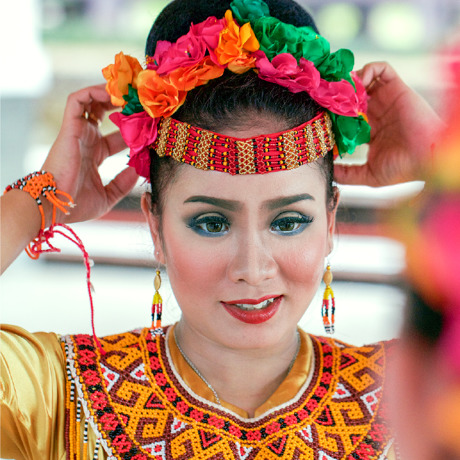Land Straddling the equator between Australia and continental Asia, Indonesia is the world’s largest archipelago. Most of its more than 17,500 islands feature rugged mountains and dense tropical forests. With more than 100 active volcanoes, it is also the most active volcanic region on earth.
People Indonesia has the fourth largest population in the world (after China, India, and the United States) and is home to more than 300 ethnic groups. The Javanese and Sundanese ethnic groups make up more than half the population.
Religion About 90 percent of Indonesians are Muslims. The rest are mostly Hindus, Buddhists, or nominal Christians. Many people also follow traditional indigenous religious customs.
Language More than 700 languages are spoken throughout the archipelago. The national lingua franca is Indonesian, derived from Malay. Most people also speak a regional language at home.
Livelihood Many people are small-scale farmers or traders. The country has rich deposits of minerals, timber, crude oil, and natural gas and is a major supplier of rubber and palm oil.
Food Rice is the staple. Popular meals include nasi goréng (fried rice and egg with vegetables),satay (barbecued meat skewers), and gado-gado (salad with peanut sauce).
Climate Hot and humid. Monsoon winds produce two seasons—wet and dry. Thunderstorms are common.

